In this article we will discuss main features of trademark use and its non-use in Uzbekistan. Trademark is a protected designation representing a logo, brand, trade name, etc. Any self-respecting entrepreneur deals with the legal protection of his trademark and understands the importance of intellectual property in business. However, entrepreneur may lose his exclusive rights to the trademark due to its non-use and unclear understanding of law requirements.
In order to register a trademark in Uzbekistan, the one applies to the Agency of Intellectual Property under the Ministry of Justice of the Republic of Uzbekistan (hereinafter – the Agency), and within set period (approximately 7-8 months) obtains a certificate of trademark registration in respect to claimed goods and services. Most importantly, the registered trademark grants the right to protect a brand from unauthorized use of the trademark by third parties. However, on the other hand, the trademark holder has an obligation to use the registered trademark in a proper manner.
What law says about trademark use?
The law does not directly oblige trademark owners to use a trademark, nor provide any sanctions for failure to use a trademark. However, the law grants other persons the right to apply to court with the claim for termination of the trademark (hereinafter – cancellation of trademark) if the trademark has not been used within last 5 years.
Article 25 of the Law of the Republic of Uzbekistan “On Trademarks, Service Marks and Appellations of Origin of Goods” (hereinafter referred to as the Law/Law on Trademarks) states that the effect of the certificate of a trademark may be terminated early (i) in full or in part on the basis of (ii) the court decision made according to the application (iii) of the concerned person in case of non-use of the trademark continuously (iv) within the last five years of its effect as well as in case of violation of the agreement on use of the collective trademark. When deciding on early termination of the trademark certificate in connection with its non-use the evidence of non-use of the trademark submitted by the trademark owner (v) due to circumstances beyond his control may be taken into account.
The main fragments used in the application of this article of the law are highlighted in bold. Explanations of the highlighted formulations are given below:
(i) in full or in part – a trademark may be registered in respect of different goods and services. The international classification of goods and services provides 34 types of goods and 11 types of services — 45 classes in total. In other words, it is up to the right owner in which classes to register his trademark. For example, MINISO brand is protected in different classes since different types of goods are produced under the same brand. Also, the national brand AKFA is currently used in various business spheres, therefore it is registered in different classes The concept “fully” (in full) is used for termination of the trademark in respect of all registered classes, and the concept “partially” (in part) is used in case if the termination of the trademark is requested only in one or some of the classes of the trademark, as well as in respect of certain types of goods and services. Moreover, the concept “partially” is also used in cases when a trademark under international registration, which is protected in several countries of the world, is terminated due to non-use only in a certain territory. For example, in the court case No.1001-1712/20664 considered by the Tashkent Inter-District Economic Court, the effect of the trademark under international registration was terminated due to non-use only on the territory of Uzbekistan. However, the trademark under international registration continues to operate in other countries where legal protection was granted.
(ii) court decision – the trademark may be terminated due to its non-use only on the basis of a court decision. Economic (if the dispute is between legal entities) and civil courts (if an individual is involved in the dispute) are entitled to consider disputes in this category. The Agency itself, as well as any other state bodies, are not authorized to consider disputes related to non-use of the trademark.
(iii) the concerned person – only the person, who is directly interested in termination of a trademark due to its non-use, may apply to court. Unfortunately, the law does not provide a specific definition for “concerned person”, however we can underline the court practice, which determines the interest of plaintiffs in this category of cases. In particular, court case No. 4-10-1809/164, considered by the Economic court of Tashkent city, established that the manufacturers of homogeneous goods that have real intention to use the disputable trademark in their activity and have carried out necessary preparatory actions for such use can be considered as concerned persons. In another court case No. 1001-1708/208, considered by the Tashkent Inter-District Economic Court, the court did not recognize the interest of the plaintiff, due to the fact that the main business activity of the plaintiff was not related to the use of the disputed trademark in respect of the registered class. On the other hand, plaintiffs often try to prove their interest by filing an application for the same trademark and in the same classes, thus justifying their position on the future intention to use the trademark. Given that the courts have applied different approaches on assessing the interest that is expressed in the filed application for trademark registration, this type of interest is always subject to individual review.
(iv) within the last five years of the trademark’s validity – lawsuit for early termination of the trademark can be brought to court if there is evidence of non-use of the trademark for the last 5 years of the trademark’s validity. For example, if the trademark was registered in 2010 and it is believed that the trademark has not been used within the last 5 years, the interested person shall prove the fact of non-use of the trademark for the period of 2015-2020. It is noteworthy that in the previous edition of the Law on Trademarks the wording of the five-year term looked differently, i.e., instead of “during the last five years of the trademark validity” it was “during any five years of the trademark validity”. In other words, earlier it was possible to terminate the trademark regardless of whether the trademark is currently used or not. For information, the current edition of the Law, which provides for a five-year grace period, should be amended soon in accordance with the Decree of the President of the Republic of Uzbekistan No. 4168 “On measures to improve public administration in the field of intellectual property according to which the five-year term should be reduced to three years.
(v) due to circumstances beyond the control of trademark owner – the Law provides that the granted grace period (5 years) may be interrupted/extended in case if the owner of the trademark proves that the use of the trademark was impossible for the circumstances beyond his control. Again, the law does not specify what circumstances can be taken into account, so this issue is subject to individual review by the court. Nevertheless, in court case No.10-1510(13)/25633, considered by the Tashkent City Economic Court within the first instance of the court, the defendant – trademark owner claimed that the defendant had made preparatory work to start the production of goods using the trademark, in particular, the equipment, raw materials, the press form, and relevant certificates for the production were all prepared, but the preparatory work took more time than expected, so the defendant was unable to use the trademark in time. However, the court did not consider this circumstance to be reasonable.
In the current business environment, a five-year grace period is more than enough to use a trademark. For comparison, in Russia and Kazakhstan the grace period is three years. Thus, failure to use a trademark without a reasonable excuse may result in termination of the trademark’s validity. To avoid early termination of the trademark, it is necessary to use it properly in respect of goods and/or services, for which trademark is registered.
What is trademark use?
There are different types of trademark use. But first of all, the trademark should be used on goods or in respect to services, for which the trademark is registered. The use of a trademark means applying the trademark, in its registered form, on goods (also in respect of services) or on packages of goods, for which trademark is registered. The use of the trademark in respect to goods and services other than those registered, will not be considered as a proper use of the trademark.
The Law on Trademarks regulates the following types of trademark use:
1. The use of the trademark shall be deemed to be its application on goods for which the trademark is registered and (or) their packaging by the trademark owner or a person to whom such right is granted on the basis of a license agreement;
Comments: It is very important to note that the use of the trademark must be committed by the right owner or licensee who has the right to use the trademark. Often, large companies, mainly manufacturers, use the trademark through their affiliated companies. In such cases, the presence of a document confirming that the manufacturer is affiliated with the company that owns the trademark, guarantees proper use of the trademark under the law.
2. The use of a trademark may also occur in following sources:
- in advertising (if advertising is placed by another person, it is necessary to have documents proving that the advertising was placed by order of the trademark owner);
- printed publications;
- on official letterheads, signboards;
- in exhibitions and fairs;
- on labels, packages of goods which are produced, offered for sale, sold or otherwise introduced into civil circulation or stored and (or) transported for this purpose, or imported into Uzbekistan;
- on documentation related to the introduction of goods into civil circulation (contracts concluded for the purchase and sale of goods or services under the trademark, commercial offers, etc.);
- in the domain name.
Every entrepreneur has to know that the trademark shall be used in the form in which it is registered. Sometimes entrepreneurs register a trademark executed in different alphabets or in different color combinations, whereas the trademark is used in a slightly different way. For example, the trade name of a medicine – PANTAFLUX is registered as a trademark consisting of two identical words, but in different alphabets: PANTAFLUX / ПЕНТАФЛЮКС. In this case, conditionally, if the name of a medicine on the label of goods is executed only in Cyrillic alphabet or only in Latin alphabet, it means that the trademark in the form of two words PANTAFLUX / ПЕНТАФЛЮКС will not be considered as used. The same principle applies to trademarks which are registered in one color, but used in another color. Consequently, it is necessary to register trademarks in the form in which the right owner uses or plans to use the trademark. If the trademark owner does not use his trademark in the form in which it is registered, the effect of this trademark may be terminated due to non-use.
On the other hand, the rules of the Paris Convention for the Protection of Industrial Property (1883), to which the Republic of Uzbekistan is also a party, in particular, paragraph 2 of section “C” of Article 5 of this Convention establishes that “Use of a trademark by the proprietor in a form differing in elements which do not alter the distinctive character of the mark in the form in which it was registered in one of the countries of the Union shall not entail invalidation of the registration and shall not diminish the protection granted to the mark”.
However, a similar rule allowing the use of the trademark in a different form is not codified in the national legislation of Uzbekistan, however, the right holder has the right to make changes in the certificate of registration of the trademark on certain elements of the trademark which do not change its essence (Article 23 of the Law on Trademarks). It follows that use of the trademark in a slightly different manner is possible only in case of recording changes to the trademark in accordance with the Law.
Thus, in case of non-use of the trademark by right-holder and/or in case of submitting documents confirming the non-use of the trademark by concerned person, there is a potential possibility of early termination of the trademark.
In conclusion, we would like to note that the main objective of implementation of the principle of mandatory use of the trademark is to ensure intensive functioning of trademarks in civil turnover and to reduce cases of trademark registrations by persons who do not use them but may prevent the appearance of same or similar trademarks on the market.



